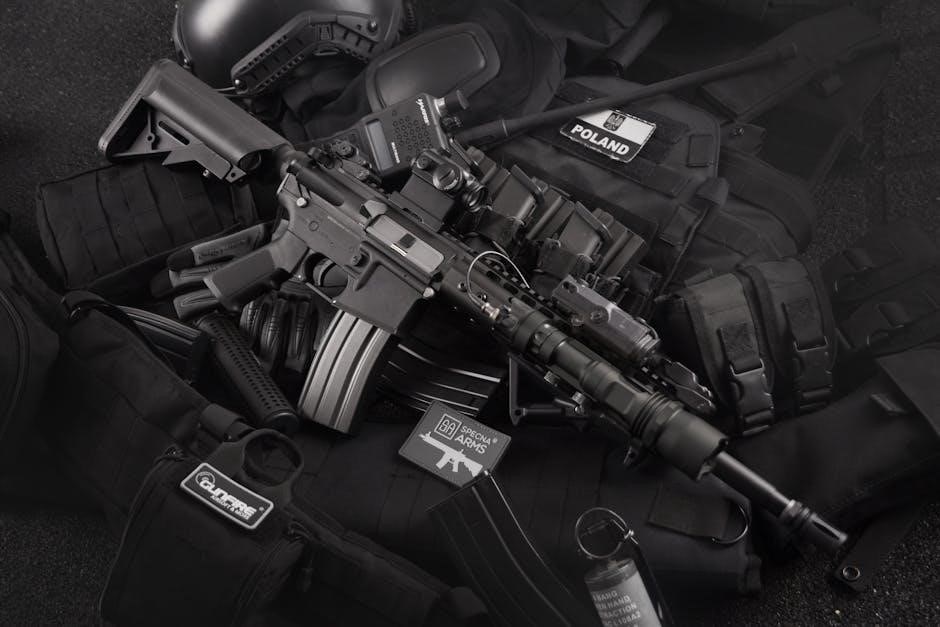
The Salvation Army Donation Value Guide is a helpful tool designed to assist donors in determining the tax-deductible value of their contributions. It categorizes items‚ assesses condition‚ and provides valuation estimates‚ ensuring transparency and ease for those supporting charitable causes.
Understanding the Purpose of the Guide
The Salvation Army Donation Value Guide serves as a vital resource for individuals and organizations seeking to contribute to charitable causes. Its primary purpose is to provide clear guidelines for estimating the fair market value of donated items‚ ensuring transparency and fairness in the donation process. By categorizing items and assessing their condition‚ the guide helps donors understand the potential tax-deductible value of their contributions. This tool is especially useful for those who want to support the Salvation Army’s mission while also benefiting from tax deductions. The guide emphasizes the importance of accurate valuations to comply with IRS regulations‚ fostering trust and accountability between donors and the organization. Ultimately‚ it aims to simplify the donation process‚ making it easier for people to give back to their communities.
Categories of Donatable Items
The Salvation Army Donation Value Guide categorizes items into groups such as clothing‚ household goods‚ furniture‚ and electronics‚ providing clear valuation estimates for each category to ensure fair assessment.
Clothing and Accessories
The Salvation Army Donation Value Guide provides detailed valuations for clothing and accessories‚ categorizing items based on condition and quality. Donors can estimate values for men’s‚ women’s‚ and children’s clothing‚ including shirts‚ pants‚ dresses‚ and outerwear. Accessories like shoes‚ belts‚ hats‚ and scarves are also included. The guide offers a range of values‚ from low to high‚ reflecting the item’s condition. For example‚ a t-shirt in good condition might be valued between $2-$5‚ while a coat in excellent condition could range from $15-$30. Donors are encouraged to assess item quality and choose a fair value within the provided range. This section helps ensure accurate and consistent valuations‚ making it easier for donors to support charitable causes effectively.
Household Goods and Furniture
The Salvation Army Donation Value Guide categorizes household goods and furniture‚ providing valuation ranges based on condition and quality. Common items include furniture like chairs‚ tables‚ and desks‚ as well as household goods such as bedding‚ kitchenware‚ and small appliances. The guide assigns values to these items‚ with ranges reflecting their condition—good‚ fair‚ or excellent. For example‚ a chair might be valued between $10 and $40‚ while a dining table could range from $50 to $150. Donors are encouraged to assess the item’s quality and select a value within the provided range. This section helps ensure fair and consistent valuations‚ making it easier for donors to contribute to charitable causes while understanding the potential tax-deductible value of their household goods and furniture. The guide emphasizes transparency and accuracy to support meaningful donations.
Electronics and Appliances
The Salvation Army Donation Value Guide provides valuation ranges for commonly donated electronics and appliances‚ such as televisions‚ computers‚ kitchen appliances‚ and small electronic devices. These items are categorized based on their condition‚ with values reflecting their functionality and market demand. For example‚ a working microwave might be valued between $30 and $75‚ while a laptop in good condition could range from $100 to $300. The guide emphasizes assessing the item’s working condition and ensuring it is free from significant damage. Donors are encouraged to use these ranges to determine fair market values for their contributions. This section helps individuals understand the potential tax-deductible value of their donations while supporting the Salvation Army’s mission; By following the guide‚ donors can ensure accurate and transparent valuations for their electronics and appliances.

Determining the Value of Donations
The Salvation Army’s guide helps donors assess item values based on condition‚ original price‚ and market demand. It categorizes items into groups and provides average value ranges accordingly.
Using the Salvation Army’s Value Guide

The Salvation Army’s Donation Value Guide provides a straightforward method to estimate the value of donated items. Donors can categorize their items‚ such as clothing‚ furniture‚ or electronics‚ and refer to the guide for average price ranges based on condition. For example‚ a gently used t-shirt might be valued between $1 and $3‚ while a sofa in excellent condition could range from $50 to $150. The guide also emphasizes assessing each item’s quality and comparing it to similar products in local markets. This ensures fair and realistic valuations. By following the guide‚ donors can accurately determine the tax-deductible value of their contributions. Additionally‚ the guide encourages donors to itemize their donations and obtain receipts from their local Salvation Army location for record-keeping and tax purposes. This system makes the donation process transparent and efficient for both donors and the organization.
Assessing Item Condition and Quality

Assessing the condition and quality of donated items is crucial for accurate valuation. The Salvation Army’s guide categorizes items into groups like clothing‚ furniture‚ and electronics‚ with specific criteria for each. For clothing‚ donors should check for stains‚ tears‚ or missing buttons‚ while furniture must be free of significant damage. Electronics need to be functional and include all original parts. Items are typically classified as “excellent‚” “good‚” or “fair” based on their state. Excellent condition items show minimal wear‚ while fair condition items may have noticeable flaws. Donors are encouraged to be honest and realistic when evaluating their items. Comparing items to similar ones in local markets can also help ensure fair valuations. This step ensures that donors provide accurate information‚ making the valuation process transparent and reliable for tax-deductible purposes. By carefully assessing condition and quality‚ donors can maximize the value of their contributions.

Tax Benefits for Donations
Donating to The Salvation Army can provide tax benefits through deductions. Items must be in good condition‚ and values should reflect fair market prices. Proper documentation is essential for claiming deductions.
How to Calculate Tax-Deductible Values
Calculating tax-deductible values for Salvation Army donations involves using their Value Guide to estimate fair market values. Start by itemizing your donations‚ noting each item’s condition and category. Assess the condition—new‚ gently used‚ or worn—to determine its value within the guide’s range. Use the guide’s suggested ranges for each category‚ such as clothing‚ furniture‚ or electronics‚ to find the appropriate value. Ensure your valuations are realistic and reflect the item’s actual condition. Keep detailed records‚ including receipts and itemized lists‚ to support your deductions. Accurate documentation ensures compliance with IRS requirements and maximizes your tax benefits. Remember‚ the Salvation Army’s guide is a helpful tool‚ but it’s essential to review and understand IRS guidelines for charitable contributions. Proper calculation and documentation are key to claiming your deductions effectively.
Documenting Donations for Tax Purposes
Proper documentation is essential when donating to The Salvation Army for tax purposes. Start by itemizing your donations‚ listing each item‚ its condition‚ and category. Obtain a receipt from The Salvation Army at the time of your donation‚ as this serves as proof of your contribution. For larger or high-value donations‚ consider obtaining a written acknowledgment. Keep detailed records‚ including photos or descriptions of the items‚ to support your claims. The IRS requires documentation for deductions over $250‚ but it’s wise to keep records for all donations. Use the Salvation Army’s Value Guide to estimate fair market values‚ ensuring your figures are reasonable and based on the items’ condition. Maintain all paperwork‚ including receipts and appraisals‚ for at least three years in case of an audit. Accurate and thorough documentation ensures compliance with tax regulations and supports your charitable deductions.